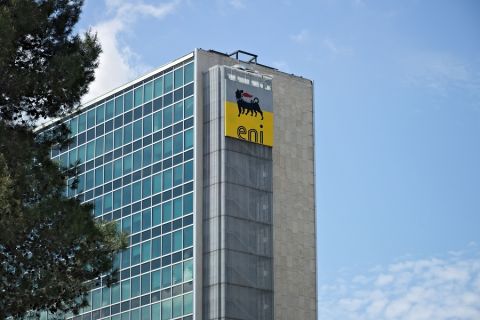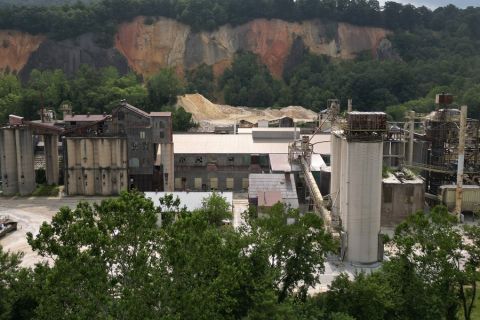Australia energy companies Woodside Energy Group Ltd. and Santos Ltd. said late on Dec. 7 that they are in preliminary merger talks, in what could be the latest big deal in a wave of global consolidation the in oil and gas sector.
A potential combination of the companies, which together have a market value of about $52 billion, comes amid challenges faced by both in their domestic projects from Indigenous people as well as rising pressures of decarbonization. Both companies have seen their share performance lag global peers.
Challenges
Woodside in October cut its 2023 production outlook and missed third-quarter revenue estimates, while it was ordered by the Australian federal court to seek new approval to conduct seismic blasting under the seabed for its $12 billion Scarborough gas project after a legal challenge by an Indigenous woman.
Santos is contending with legal challenges from a traditional land owner from the Tiwi Islands on undersea pipeline works for its $3.6 billion Barossa gas project and has forecast lower output in 2024 as its Bayu-Undan gas field reached the end of its life and its West Australian offshore field's output declined.
Assets and projects
Woodside
Woodside operates major liquefied natural gas (LNG) export facilities in Australia, including North West Shelf and Pluto LNG, and three floating production storage and offloading (FPSO) facilities in western Australia. The company also owns a stake in the Chevron-operated Wheatstone LNG project.
The company is involved in oil-gas joint ventures in the Bass strait and partners with Santos at Macedon, a gas field off western Australia. Woodside has been trying to sell ageing domestic oil and gas assets where production is declining and high decomissioning costs are required.
The company received approval for its Scarborough and Pluto Train 2 projects in Australia in 2021, with first LNG cargo expected in 2026.
Globally, Woodside operates in the U.S. Gulf of Mexico with three offshore platforms, as well as an offshore processing facility in Trinidad and Tobago.
In Senegal, Woodside is targeting first oil production at the Sangomar Field Development Phase 1 in 2024. Woodside has also made a final investment decision to develop the large, high-quality Trion resource in Mexico, with first oil output targeted for 2028.
Other Woodside projects include proposed hydrogen and ammonia projects H2Perth and H2TAS in Australia and another hydrogen project, H2OK, in North America.
Santos
Santos operates Gladstone LNG and holds a stake in Papua New Guinea LNG.
The company expects production at the Timor-Leste Bayu-Undan field to cease in 2025 and plans to backfill Darwin LNG with supply from the Barossa field.
Santos is the second-biggest producer of domestic gas in Western Australia and has invested in two offshore oil fields, Van Gogh and Pyrenees.
On the Australian east coast, Santos portfolio includes the Cooper and Eromanga Basins as well eastern Queensland production.
In the U.S., Santos is advancing its Pikka Phase 1 project in Alaska, expecting first oil production in 2026.
Combined
If the companies merge, they would have a 26% share of Australia's east coast gas market. Combined oil and gas production in 2022 for the two totaled slightly over 260 million barrels of oil equivalent (MMboe), and their total proven plus probable reserves are 5.39 billion MMboe, based on data from the companies.
The Australian Competition and Consumer Commission (ACCC) said on Dec. 7 it would consider whether a public merger review into the impact on competition was required if the deal goes ahead.
"Given ACCC's focus on East Coast gas, we expect a (merged company) may be a forced seller of the Cooper Basin," Macquarie bank analyst Mark Wiseman said in a note.
Recommended Reading
Ithaca Deal ‘Ticks All the Boxes,’ Eni’s CFO Says
2024-04-26 - Eni’s deal to acquire Ithaca Energy marks a “strategic move to significantly strengthen its presence” on the U.K. Continental Shelf and “ticks all of the boxes” for the Italian energy company.
Apollo to Buy, Take Private U.S. Silica in $1.85B Deal
2024-04-26 - Apollo will purchase U.S. Silica Holdings at a time when service companies are responding to rampant E&P consolidation by conducting their own M&A.
Deep Well Services, CNX Launch JV AutoSep Technologies
2024-04-25 - AutoSep Technologies, a joint venture between Deep Well Services and CNX Resources, will provide automated conventional flowback operations to the oil and gas industry.
EQT Sees Clear Path to $5B in Potential Divestments
2024-04-24 - EQT Corp. executives said that an April deal with Equinor has been a catalyst for talks with potential buyers as the company looks to shed debt for its Equitrans Midstream acquisition.
Matador Hoards Dry Powder for Potential M&A, Adds Delaware Acreage
2024-04-24 - Delaware-focused E&P Matador Resources is growing oil production, expanding midstream capacity, keeping debt low and hunting for M&A opportunities.





